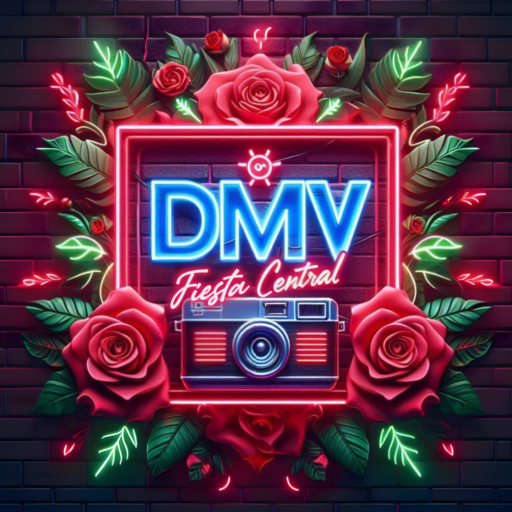Blog
How Power Symbols Enhance User Engagement in Digital Games
In the rapidly evolving landscape of digital gaming, designers constantly seek innovative ways to captivate players and foster prolonged engagement. One of the most effective strategies involves the strategic use of power symbols. These visual, auditory, and interactive cues serve as vital tools that not only guide player behavior but also evoke emotional responses, creating immersive gaming experiences rooted in psychological principles.
2. The Role of Visual and Functional Power Symbols in Enhancing Engagement
3. Key Educational Concepts Behind Power Symbols
4. Case Study: Modern Examples of Power Symbols in Digital Slots
5. How Power Symbols Foster Deeper Player Engagement and Retention
6. The Intersection of Educational Theory and Game Design
7. Non-Obvious Aspects of Power Symbols in Digital Games
8. Practical Design Guidelines for Implementing Power Symbols
9. Conclusion: Leveraging Power Symbols to Create Immersive and Engaging Gaming Experiences
1. Introduction to Power Symbols in Digital Games
a. Definition and significance of power symbols
Power symbols are visual, auditory, or tactile cues embedded within game interfaces that communicate status, progress, or upcoming events. They serve as intuitive signals to players, such as flashing icons, special animations, or unique sounds, that foster understanding and anticipation. Their significance lies in their ability to guide players seamlessly through complex game mechanics, thereby enhancing user experience and emotional engagement.
b. The psychology behind engaging visual cues
Research in cognitive psychology indicates that humans are naturally drawn to salient visual stimuli due to their ability to capture attention and evoke emotional responses. Bright colors, movement, and contrast in power symbols activate the brain’s reward circuitry, reinforcing positive feelings when players recognize and respond correctly. This creates a feedback loop where visual cues not only inform but also motivate continued engagement.
c. Overview of how power symbols influence player behavior
By signaling imminent rewards, indicating progress, or providing control options, power symbols shape player behavior in subtle yet powerful ways. They encourage players to explore new features, stay attentive during gameplay, and persist through challenges. For instance, visual cues like flashing symbols for free spins stimulate anticipation, motivating players to continue sessions and increasing overall session length.
2. The Role of Visual and Functional Power Symbols in Enhancing Engagement
a. Types of power symbols: visual cues, auditory signals, and interactive elements
- Visual cues: icons, animations, color changes, and highlighting effects
- Auditory signals: sound effects, chimes, and voice prompts
- Interactive elements: buttons, hold/spin options, and control panels
b. How visual symbols create immediate recognition and excitement
Visual symbols like flashing scatter icons or animated reels quickly communicate game states, elevating excitement. Their design often leverages color psychology—using golds and reds to evoke urgency or win potential. Immediate recognition of symbols accelerates decision-making, making gameplay more dynamic and fulfilling.
c. The importance of functional symbols in providing feedback and reinforcing actions
Functional symbols, such as progress bars or confirmation lights, validate player actions and reinforce learning. For example, a “Hold” symbol that lights up when selected confirms control, encouraging players to experiment and develop mastery. Such feedback mechanisms are essential in maintaining engagement and reducing frustration.
3. Key Educational Concepts Behind Power Symbols
a. The concept of reinforcement in game design
Reinforcement theory, rooted in behavioral psychology, emphasizes that repeated positive stimuli increase the likelihood of desired behaviors. Power symbols act as immediate reinforcers—such as a sparkle when a winning combination appears—encouraging players to continue engaging with the game.
b. Cognitive engagement through visual stimuli
Visual stimuli stimulate the brain’s attention systems, maintaining focus and promoting deeper processing of game events. Consistent visual cues help players form mental models of game mechanics, fostering a sense of control and understanding.
c. The role of anticipation and reward mechanisms
Anticipation is a core driver of engagement. Power symbols that signal upcoming rewards—like a flashing scatter icon indicating a potential free spins round—build excitement. When the reward is eventually realized, it reinforces the connection between action and outcome, motivating continued play.
4. Case Study: Modern Examples of Power Symbols in Digital Slots
a. The “Tumbling Reels” feature: removing winning symbols to create new opportunities
This feature visually signifies potential for consecutive wins through animated effects where winning symbols vanish, making way for new symbols to fall into place. The dynamic movement and flashing effects instantly communicate game progression, maintaining excitement. Such visual cues reinforce the idea of continuous opportunity, encouraging players to stay engaged.
“The tumbling reels mechanic leverages visual dynamism to keep players anticipating the next payout.”
b. The “Hold Space” feature: facilitating turbo spins with visual cues and accessibility
In games like play sweet bonanza super scatter free, the hold feature is indicated by blinking icons and highlighted controls, often accessible via keyboard. These visual cues foster a sense of empowerment, allowing players to control pacing and making the feature accessible to a broader audience, including those with motor impairments.
“Accessibility-enhanced symbols bridge the gap between entertainment and inclusive design, expanding engagement.”
c. The “Free Spins” bonus round: retriggering through scatter symbols
Scatter symbols are often designed with distinctive visual features—bright colors, animations, and prominent placement—that clearly indicate their importance. When players land enough scatters, the visual cue triggers a bonus round, and additional scatters retrigger the feature, shown by flashing icons and countdown counters. This visual reinforcement boosts motivation and session length, demonstrating how well-designed symbols sustain engagement.
“Clear visual indicators of retriggers foster a sense of mastery and anticipation, critical for retention.”
5. How Power Symbols Foster Deeper Player Engagement and Retention
a. Creating a sense of mastery and control through visual cues
When players see symbols that clearly indicate their actions’ effects—such as a glowing “spin” button or a progress meter—they develop a sense of mastery. This perceived control enhances intrinsic motivation, encouraging players to experiment and learn game mechanics more deeply.
b. Building emotional connections via rewarding symbols and features
Rewarding symbols—like sparkling scatters or animated wilds—evoke positive emotions, fostering emotional bonds with the game. These symbols act as emotional anchors, making gameplay more memorable and encouraging repeated sessions.
c. Encouraging continued play through anticipation of rewards
Features like retriggerable free spins or turbo modes, indicated by visual cues, sustain player interest. The anticipation of potential big wins, reinforced visually, creates a compelling loop that motivates players to keep engaging, thereby increasing retention.
6. The Intersection of Educational Theory and Game Design
a. Applying behavioral psychology principles
Game designers utilize reinforcement schedules—especially variable ratio schedules—similar to gambling mechanics, to maximize engagement. Power symbols act as reinforcement points, providing intermittent positive feedback that sustains player interest over time.
b. The importance of intuitive design for accessibility and inclusivity
Designing symbols that are easily recognizable and operable through multiple modalities ensures broader accessibility. For example, combining visual cues with auditory signals caters to players with visual impairments, aligning with inclusive design principles.
c. Balancing complexity and clarity in power symbol implementation
While advanced symbols can add depth, cluttered interfaces diminish clarity. Striking a balance—using simple, consistent symbols that evolve with the game—enhances usability without sacrificing engagement.
7. Non-Obvious Aspects of Power Symbols in Digital Games
a. Cultural and contextual interpretations of symbols
Symbols may carry different meanings across cultures. For instance, a color or icon considered lucky in one region might have negative connotations elsewhere. Designers must consider cultural context to ensure symbols are universally effective or appropriately localized.
b. The subtle influence of sound and visual harmony on engagement
Harmonious sound and visual design amplify the impact of power symbols. A well-timed chime combined with a flashing icon enhances perceived reward, leveraging multisensory integration to deepen engagement.
c. How power symbols can influence player perception of fairness and randomness
Consistent and transparent use of symbols helps players perceive the game as fair. Overly flashy or inconsistent symbols may evoke suspicion, so balanced design is essential to maintain trust and enjoyment.
8. Practical Design Guidelines for Implementing Power Symbols
a. Visual consistency and clarity
- Use a consistent color palette and animation style for related symbols
- Ensure symbols are distinguishable at different screen sizes and resolutions
b. Using symbols to communicate status and upcoming features
- Implement visual cues like progress rings or countdown timers
- Highlight upcoming features with subtle animations or glow effects
c. Incorporating support features (like keyboard accessibility) to broaden engagement
<ul style=”margin-bottom:









